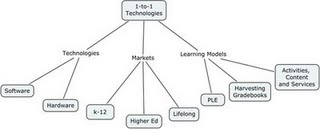After taking a quick look at open office.org it seems to me that there are many similarities with Microsoft office. Now, I believe in students learning how to use computer technologies in schools. Most businesses require employees to use their software for communication and development of presentations. If I owned a business I would not be interested in training workers on how to use a simple word processor. I would expect that they would have been exposed to that during their education, especially in these times which we are relying more and more on technology in the working world.
Having said that why is it that students need to use Microsoft Word? After quickly looking at open office it seems to me that the interface is very similar to Word. Why is it necessary to have students or schools pay for expensive proprietary products when they can just use the free OSS offered on the internet? Open Office also states that their program is fully compatible with most other types of software so there shouldn’t be a problem transferring documents to Open Office from other programs. There are most likely subtle differences between Open Office and Microsoft Word as well and between other applications from Open Office and the Microsoft suite. In my opinion it is probably not going to be so great that it would cause a new hire to undergo intense training in Word in order to be able to use its basic functions.
Besides this brings to mind a couple of years ago when I was working as a teacher and the entire school upgraded to the new Microsoft Office 2007 product. The differences between the older version and the newer version were huge. Myself as well as many co-workers were very distraught with the fact that our work production was slowed because we had to learn how to use a new program. Things as simple as finding the line spacing format tab and the print preview button became frustrating examples of changes to the program that slowed us down as workers. Not to mention there were problems with viewing older works from other word processors that made reading some students work impossible, I’m not even going to get into the frustrations with Power Point! So even with new versions of PS coming out every few years workers are going to have to undergo some changes to what they are used to using anyway. If employees are going to have to make changes anyway why not just encourage schools to use the free software for their students so they can cut down on their costs? Better yet why don’t we have businesses using OSS technology and saving themselves money?

